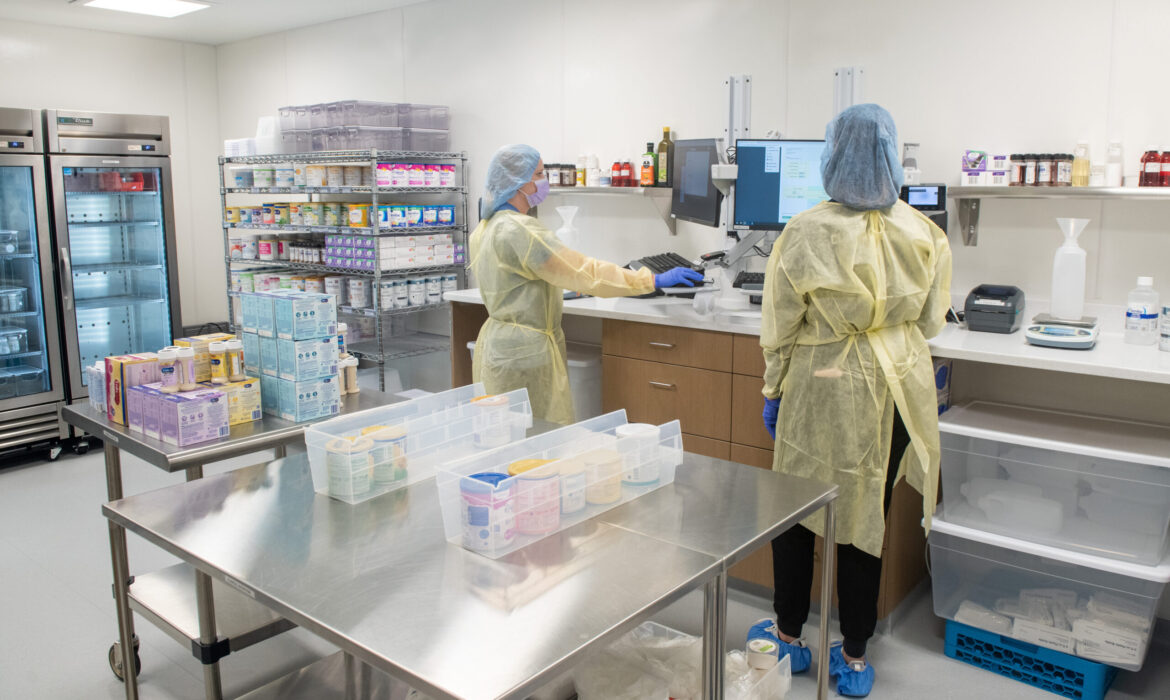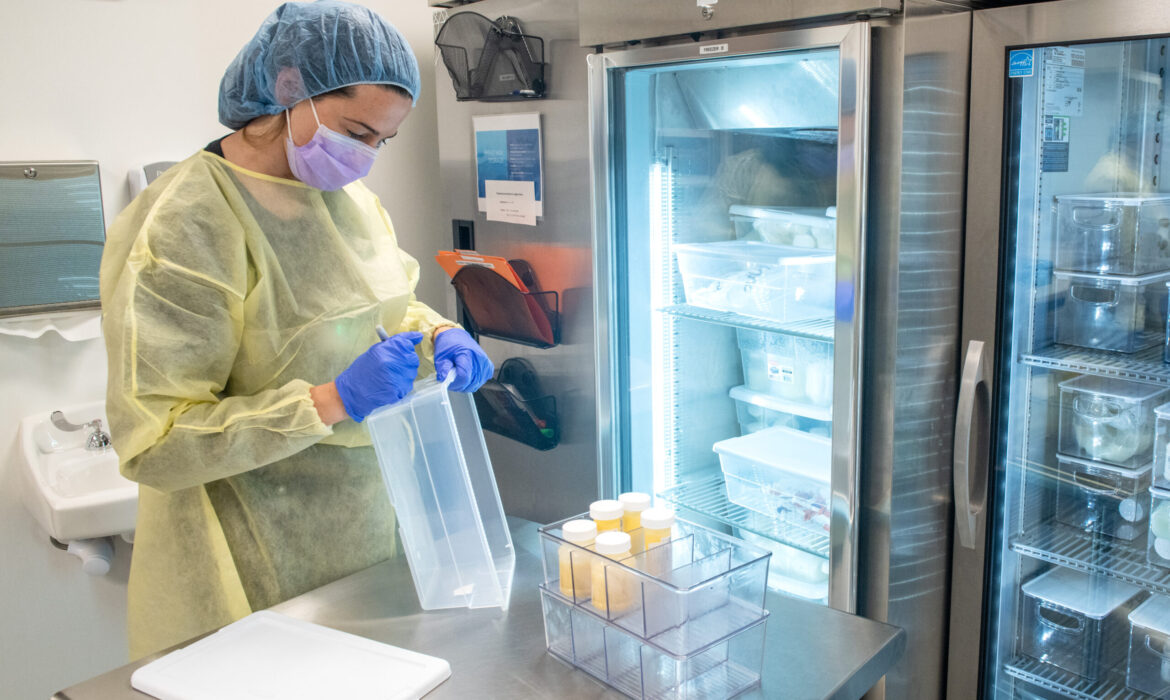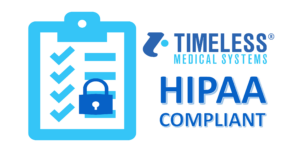How Tracking Infant Feeding Near Misses Improves Patient Safety
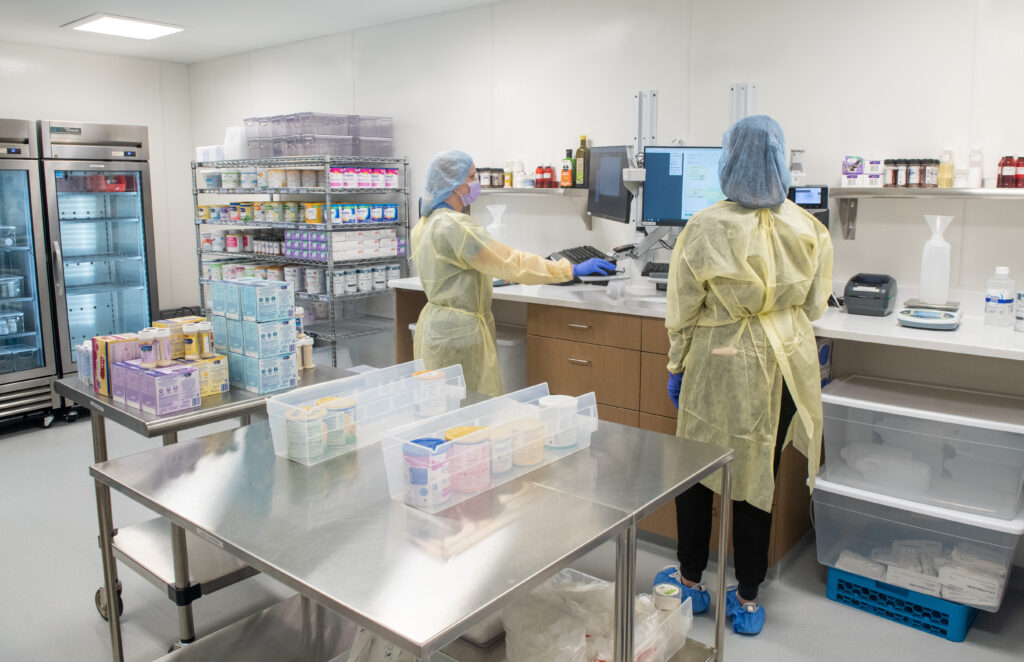
Understanding Near Misses and Preventable Adverse Events
Improving patient safety and reducing the incidence of medical errors or “preventable adverse events” is a key goal of healthcare organizations. According to the Agency for Healthcare Research and Quality (AHRQ), a preventable adverse event is an incident that is “avoidable by any means currently available” while a near miss is an “unsafe situation that is indistinguishable from a preventable adverse event except for the outcome.”1 It is often by chance that a near miss does not reach a patient. To monitor and seek ways to reduce errors, most organizations have safety reporting systems that allow staff to report errors and near misses. However, despite that the frequency of near misses is significantly higher than actual adverse events (potentially 7-100 times more frequent), reporting of near misses is much lower.2 Safety reporting systems allow hospital leaders to evaluate trends and areas of vulnerability to continually improve processes. Having knowledge and understanding of near misses is an important key to determining potential failure points within a process. As the healthcare industry has learned from other sectors (particularly the airline industry), analyzing near miss data provides an important opportunity to evaluate and create systems that can prevent adverse events and improve safety.2 Many experts believe that near miss data within the healthcare setting should be analyzed more extensively than is currently being done and that this data is underutilized in helping to prevent future problems.2,3 By monitoring and evaluating near misses, an organization gains insight into potential “loopholes” of current processes and allows them to design or redesign systems with checkpoints to prevent near misses from becoming preventable errors.2-4
In the context of providing infant feedings within the hospital setting, an infant receiving the wrong human milk (HM), fortifier, or formula would be considered a preventable adverse event. Scanning the wrong HM, fortifier, or formula at the time of preparation and/or feeding, but having the bar code scanning system prevent the error by alerting the clinician, would be considered a near miss.
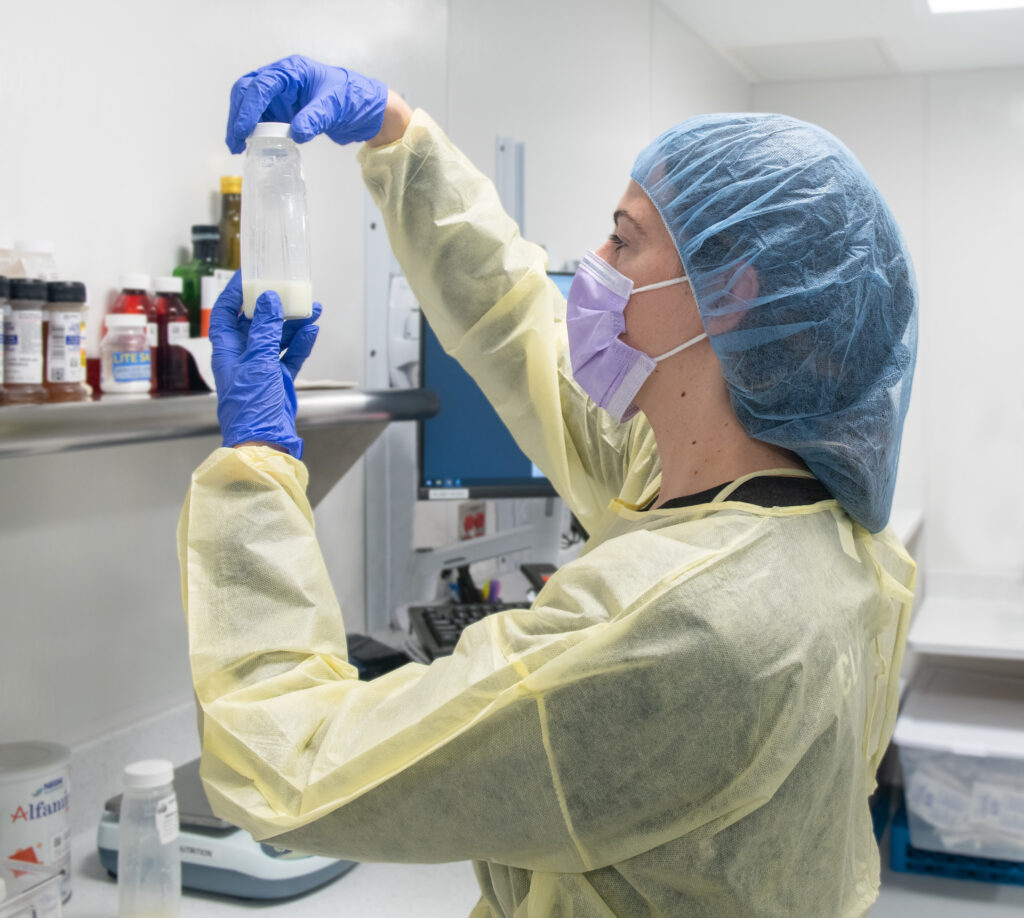
Use of Bar Code Scanning Technology to Prevent Errors
The use of bar code scanning technology in place of manual two-person verification processes to reduce risk of human error has become common in healthcare.4-8 One common use of bar code scanning is during the administration of products where the bar code on the item being administered is scanned against the bar code on the patient’s armband to confirm the correct product is being administered.5,9-13 There are many benefits of bar code scanning over using a manual two-person visual verification process. Scanning is more efficient, has a lower risk of human error, and eliminates potential for confirmation bias.10,11 At present, scanning HM at the time of feeding is common while practices with regards to scanning HM at the time of feeding preparation as well as the scanning of formulas and fortifiers vary significantly between healthcare organizations.
Published research supports that bar code scanning of HM, fortifiers, and formulas reduces errors by preventing the error from reaching the patient.9-11,14 However, little emphasis has been placed on using near miss data from scanning HM, fortifiers, and formulas to modify processes and prevent future errors.
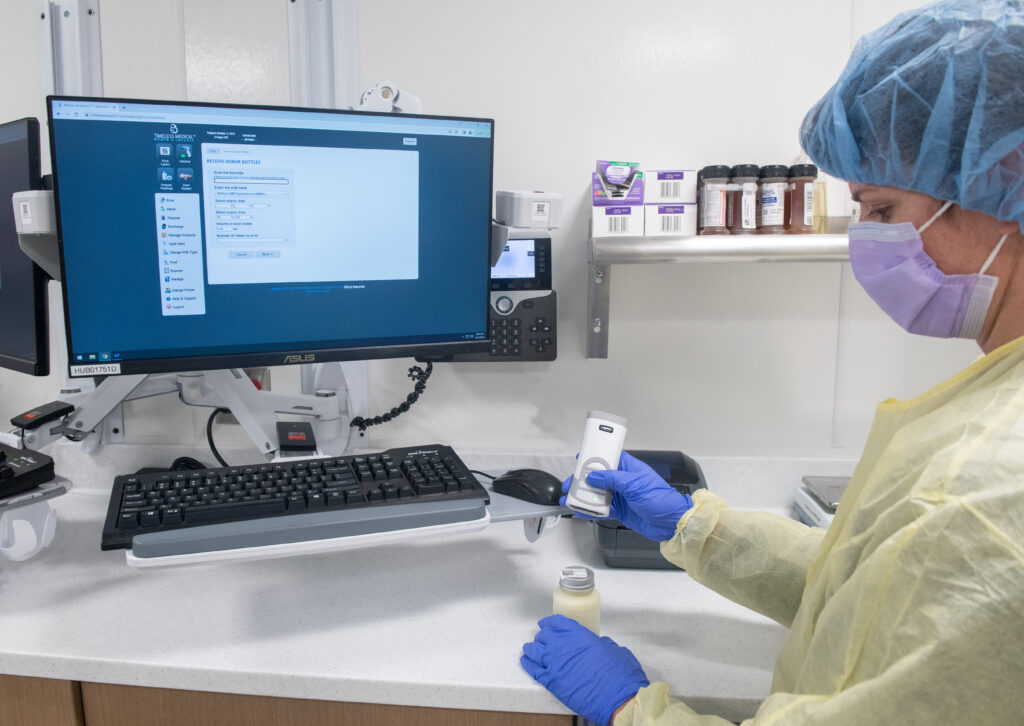
Evaluating Bar Code Scanning Near Miss Data to Improve Processes
The use of a bar code scanning system for infant feedings increases the data available for analysis. As many published studies have noted, the number of near misses identified when scanning technology was implemented was significantly higher than actual errors manually reported prior to scanning implementation, leading many authors to postulate that actual preventable adverse events were likely much higher than realized when systems were not in place to capture them.9-11 One organization noted that 55% of potential failure points for HM handling and administration were undetectable prior to implementation of bar code scanning.11 Therefore, having the ability to review and sort near miss data to identify those potential failure points can help improve safety in a variety of ways.
- Identifying the location/area most likely to have near misses One study, in a hospital using centralized feeding preparation with dedicated technicians, found that 75% of wrong HM scans occurred at the bedside at the time of feeding with the nurse who had 1-3 patients to care for as opposed to in the preparation room where technicians may be preparing feedings for 50 infants at a time.11 Without evaluating near miss data, they would have been unaware of this trend and would not have been able to use that data to focus educational efforts for staff. It also reinforced that even with centralized preparation and dedicated technicians, scanning needed to be used consistently throughout the entire process (from preparation through feeding) to ensure patient safety. Such data could also help identify if a particular unit or shift was more likely to have near misses so that follow-up training or analysis could occur. For example, organizations could evaluate if near misses were more likely to occur on the night shift or in a step-down nursery and use that data to modify workflows or focus educational campaigns.
- Identifying most common types of near misses Research data from different healthcare organizations has found that attempts to use expired HM was more common than attempts to use the wrong patient’s HM.9-11 In these cases, this near miss data highlighted an area of vulnerability that neither organization knew was a problem prior to using bar code scanning technology.9-11 This near miss data could help an organization determine if changes in processes are warranted. For example, if having feedings expire before use was identified as an issue, a hospital may determine that preparing feedings twice daily rather than once daily would be more appropriate. Alternatively, if the use of additives near their expiration date/time was identified as the cause of the problem, processes could be modified as to when opened additives are discarded.
- Providing actual data to share with the healthcare team In healthcare, we often suspect we know the reason for an issue, but we do not always have the data to support those suspicions. Having concrete data as to when and where near misses are occurring and sharing this with staff on its own can improve safety. Often merely highlighting an issue can help reduce risk by bringing awareness. In one study, after determining the location of the majority of the near misses, the organization began sharing near miss data with bedside staff on a quarterly basis to emphasize how frequent such errors could occur and to reinforce the importance of not skipping the scanning step.11
Timeless Medical Systems now offers preparation room consulting services covering many aspects including equipment and layout design, FTE calculations, training and certifications for prep room technicians, and even creating daily workflows to optimize efficiencies. Our very experienced and skilled Clinical Team Members have 1st hand experience in creating and implementing centralized preparation rooms and processes in some of the largest most prestigious hospitals throughout North America. If you are interested in learning more about these consulting services, please contact sales@timelessmedical.com.
References:
- Agency for Healthcare Quality and Research. Adverse events, near misses, and errors. Patient Safety Network. September 7, 2019. https://psnet.ahrq.gov/primer/adverse-events-near-misses-and-errors. Accessed February 22, 2023.
- Aspden P, Corrigan JM, Wolcott J, Erickson SM, eds. Patient Safety: Achieving a New Standard for Care. Washington, DC: The National Academies Press; 2004. https://doi.org/10.17226/10863
- Sheikhtaheri A. Near Misses and Their Importance for Improving Patient Safety. Iran J Public Health. 2014;43(6):853-854.
- Sameera V, Bindra A, Rath GP. Human errors and their prevention in healthcare. J Anaesthesiol Clin Pharmacol. 2021;37(3):328-335. doi: 10.4103/joacp.JOACP_364_19. Epub 2021 Oct 12. PMID: 34759539; PMCID: PMC8562433.
- Steele C, Collins EA, eds. Infant and Pediatric Feedings: Guidelines for Preparation of Human Milk and Formula in Health Care Facilities. 3rd ed. Chicago, IL: Academy of Nutrition and Dietetics; 2019.
- Spatz DL, Edwards TM. The use of human milk and breastfeeding in the neonatal intensive care unit: position statement 3065. Adv Neonatal Care. 2016;16(4):254.
- Moro GE, Arslanoglu S, Bertino E, et al. American Academy of Pediatrics; European Society for Pediatric Gastroenterology, Hepatology, and Nutrition. Human milk in feeding premature infants: consensus statement. J Pediatr Gastroenterol Nutr. 2015;61(suppl 1):S16-S19.
- Malone A, Carney LN, Carrera AL, Mays A. ASPEN Enteral Nutrition Handbook. 2nd ed. Silver Spring, MD: American Society for Parenteral and Enteral Nutrition; 2019.
- Oza-Frank R, Kachoria R, Dail J, Green J, Walls K, McClead RE. A quality improvement project to decrease human milk errors in the NICU. Pediatrics. 2017;139(2):e2 0154451.
- Steele C, Bixby C. Centralized breastmilk handling and bar code scanning improve safety and reduce breastmilk administration errors. Breastfeeding Med. 2014;9(9):426-429.
- Steele C, Bixby C. Bar code scanning of human milk and enteral formulas improves efficiency and patient safety: a 7-year review. Nutr in Clin Pract. 2022;37(4):921-928. https://doi.org/10.1002/ncp.10765.
- Steele C. Safe handling of human milk within the hospital setting. Neonatal Intensive Care- The J of Perinatol Neonatol. 2020;33(3):11-14.
- Steele C. Best practices for handling and administration of expressed human milk and donor human milk for hospitalized preterm infants. Frontiers in Nutrition. 2018;5(76):1-5. doi: 10.3389/fnut.2018.00076.
- Alessi S, Rengifo J, Steele C, Kaur G, Desai P. Improving Comprehensive Enteral Feeding Handling Processes in a Level 4 NICU: A Quality Improvement Project. Pediatric Academic Societies (PAS) Abstract. E-PAS2023:369.10. https://2023.pas-meeting.org/searchbyposterbucket.asp?f=PosterCustomField14&pfp=BrowseByPosterTopic
Staffing Your Hospital Infant Feeding Preparation Room
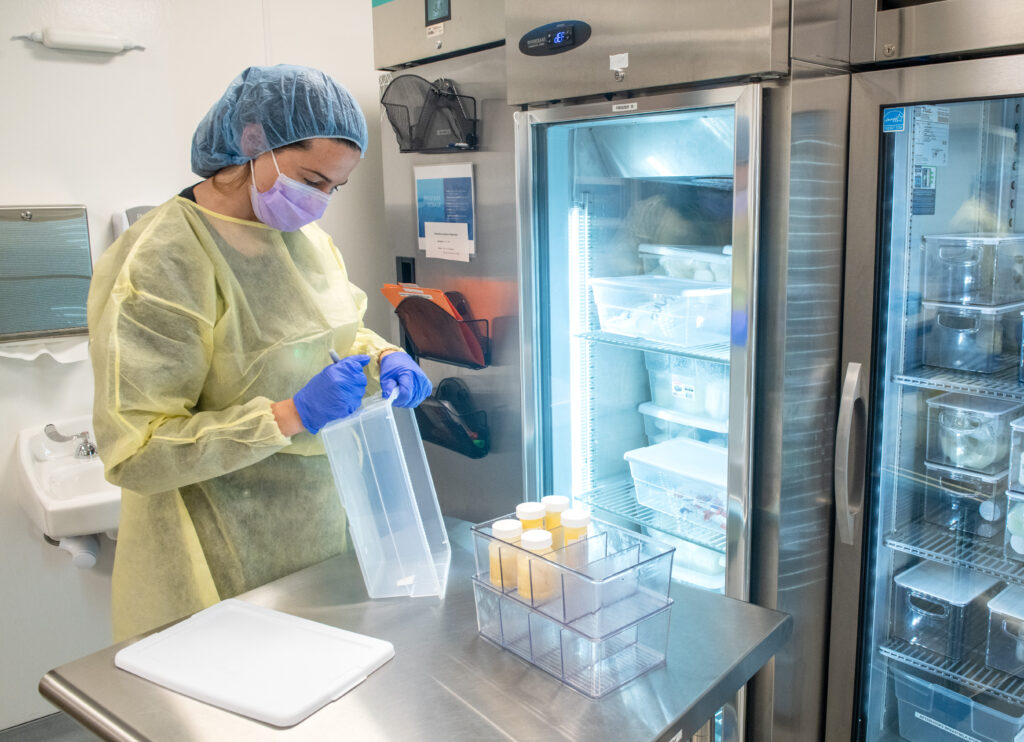
Hospitals are increasingly recognizing the value of using dedicated staff within a centralized location for human milk (HM) and formula preparation to reduce risk of contamination and preparation errors. The key is getting the right staff in place to perform this important function.
Why use dedicated staff?
- Use of dedicated staff allows them to focus solely on feeding preparation without other distractions and patient care duties.
- Published data supports that the use of dedicated technicians for feeding preparation improves patient safety by reducing frequency of errors.1,2,3
- In a six-year analysis of a 114-bed neonatal intensive care unit (NICU), wrong HM, expired HM, and wrong fortifier scans when their bedside nurses were preparing feedings were compared to wrong scans when dedicated technicians were preparing feedings. Researchers found that incorrect scans per 1,000 bottles decreased from 97 to 14 when dedicated technicians were utilized.1
- A review within a level IV NICU found that wrong HM scans decreased by 88% when feeding preparation responsibilities were moved from the bedside nurse to dedicated technicians.2 In addition, expired HM scans and wrong fortifier scans per 1,000 feeding preparations decreased from 40.9 to 5.3.2
- A seven-year review in a 104 bed level IV NICU found that 75% of wrong HM scans occurred at the bedside.3
- Use of technicians for feeding preparation provides the bedside nurse additional time to focus on direct patient care duties including assisting parents with skin-to-skin and direct breastfeeding. It also allows registered nurses to work at the top of their scope.
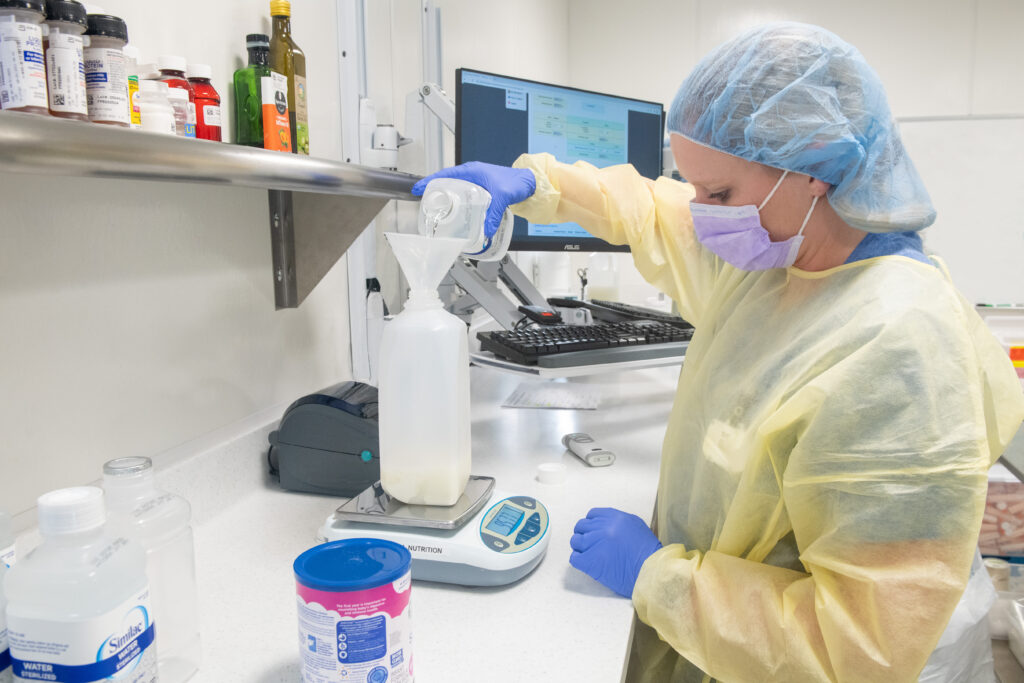
Education and skills
Many hospitals are unsure of where to start to find appropriate candidates. The goal of an infant feeding preparation operation is to provide safe and accurately prepared human milk and formula feedings to the right patient at the right time. While there is not a uniform job description or educational requirement for an infant feeding preparation technician at this time, to accomplish this goal the candidate should have a skill set that includes:4
- Knowledge of infection control measures and aseptic technique
- Understanding of proper handling of HM and formulas
- Critical thinking skills
- Basic math skills
- Attention to detail
- Good written and verbal communication
- Strong time management skills
- Pharmacy technician
- Medical technologist
- Certified nursing assistant (CNA)
- Licensed practical nurse (LPN) or licensed vocational nurse (LVN)
- Certified dietary manager (CDM)
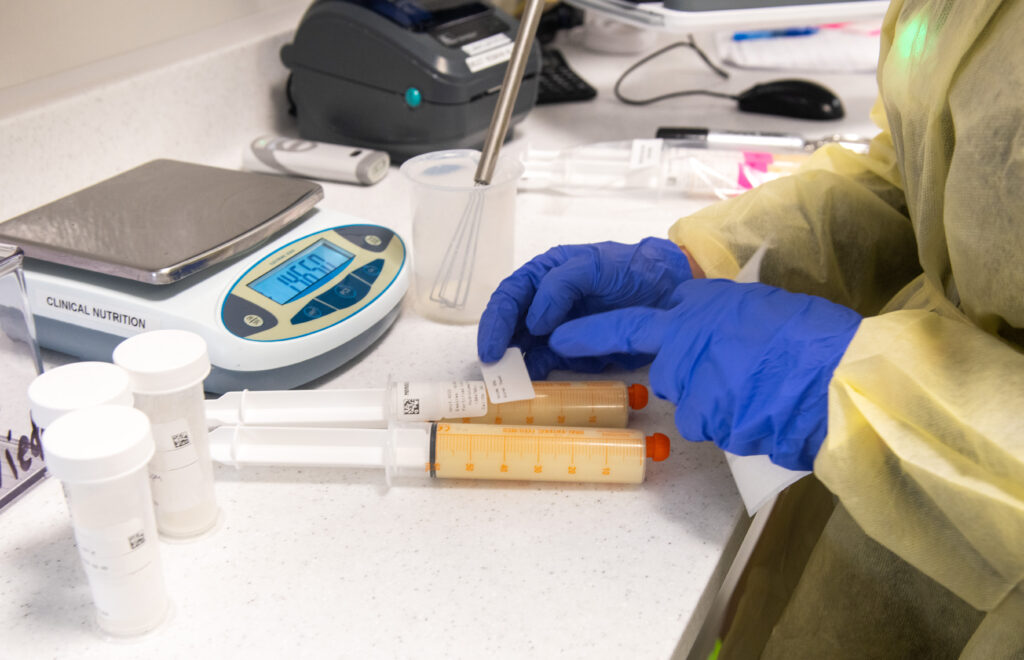
Selecting non-technical staff from within an organization can still have benefits. Internal candidates have a knowledge of the organization and may have some familiarity with some of the hospital computer systems. Some examples of internal candidates could include:
- Food service employees: Knowledge of aseptic technique and proper food handling.
- Supply chain employees: Knowledge of products, ordering, and hospital units.
- Sterile processing employees: Knowledge of aseptic technique.
- Unit support or nursing assistants: Knowledge of aseptic technique, hospital units, and hospital computer systems.
Timeless Medical Systems now offers preparation room consulting services covering many aspects including equipment and layout design, FTE calculations, training and certifications for prep room technicians, and even creating daily workflows to optimize efficiencies. Our very experienced and skilled Clinical Team Members have 1st hand experience in creating and implementing centralized preparation rooms and processes in some of the largest most prestigious hospitals throughout North America. If you are interested in learning more about these consulting services, please contact sales@timelessmedical.com.
References:
- Oza-Frank R, et al. A Quality Improvement Project to Decrease Human Milk Errors in the NICU. Pediatrics. 2017;139(2). DOI: 10.1542/peds.2015-4451.
- Alessi S, Rengifo J, Steele C, Kaur G, Desai P. Improving Comprehensive Enteral Feeding Handling Processes in a Level 4 NICU: A Quality Improvement Project. Pediatric Academic Societies Abstract April 2023.
- Steele C, Bixby C. Bar Code Scanning of Human Milk and Enteral Formulas Improves Efficiency and Patient Safety: A 7-Year Review Nutrition in Clinical Practice. 2021;1-8. https://doi.org/10.1002/ncp.10765
- Steele C, Collins E, eds. Infant and Pediatric Feedings: Guidelines for Preparation of Human Milk and Formula in Health Care Facilities. 3rd ed. Chicago, IL: Academy of Nutrition and Dietetics; 2018.
- Ohio State University. Infant Feeding Technician Certificate Course. https://foodindustries.osu.edu/infant
- Columbus State Community College. Formula / Human Milk Technician Certificate Program https://www.cscc.edu/for-business/formula-tech.shtml

